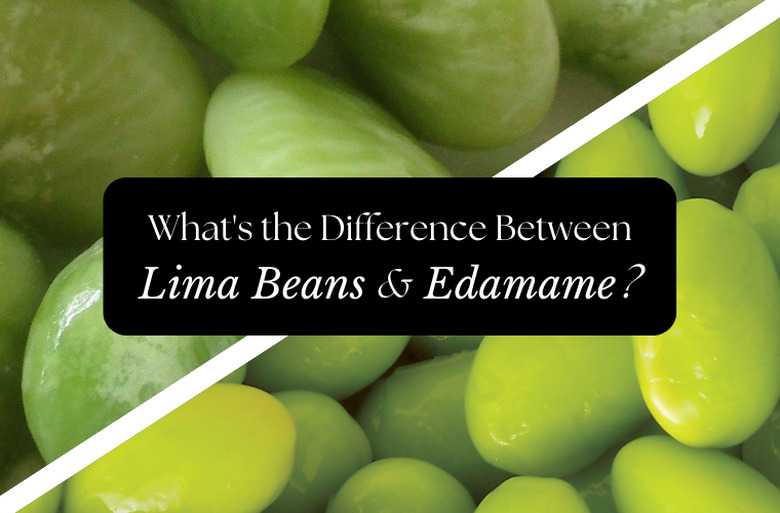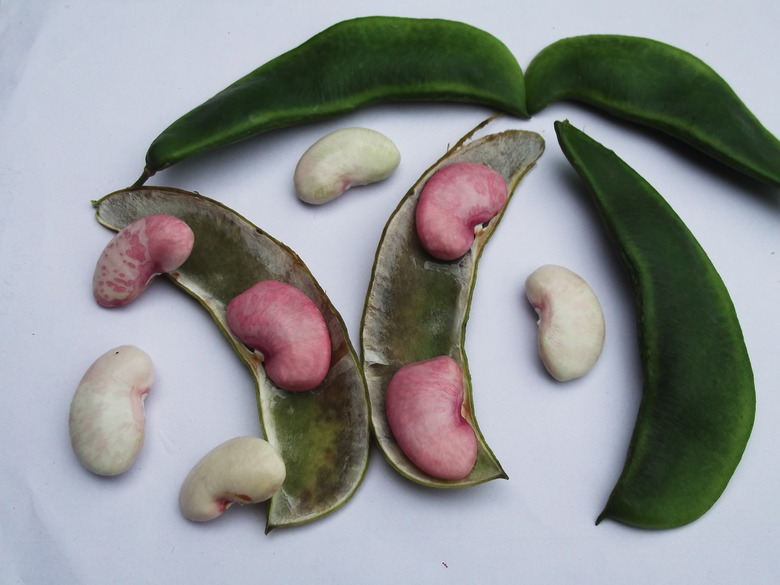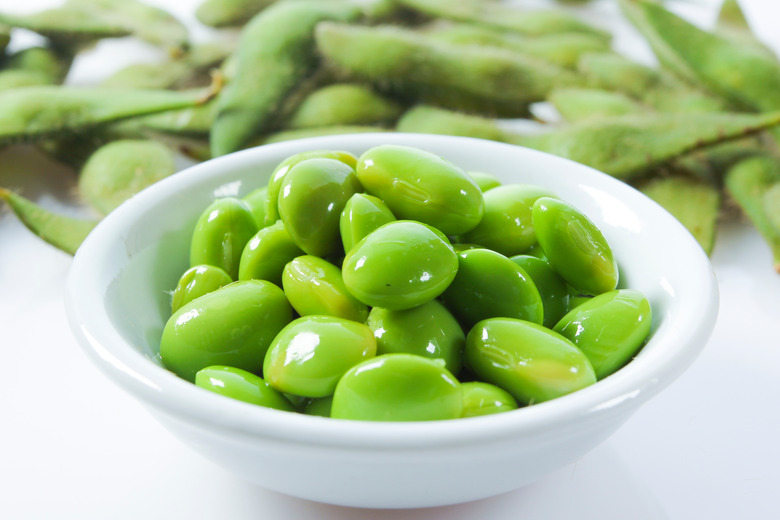What Is The Difference Between Lima Beans & Edamame?
Lima beans (Phaseolus lunatus L.) and edamame (Glycine max (L) Merr.) are different species of legumes. Edamame is simply a variety of soybean that is eaten fresh as a vegetable. Lima beans, on the other hand, can be used fresh or dry. Both species are warm-weather crops that can be grown in the home garden and have similar cultural needs.
Lima Beans vs. Edamame
Also known as butter beans, lima beans are sold dry or canned. They have a buttery, nutty flavor. Nutrients in lima beans include protein, fiber, calcium and iron as well as phosphorus and magnesium.
Meanwhile, edamame is also referred to as "vegetable soybeans" since they are picked when they are still green and consumed fresh. What does edamame taste like? It has a nutty taste that is slightly sweet. Edamame is a popular snack in Asia and can often be purchased frozen at many grocery stores. Edamame is rich in protein and iron as well as vitamins A and C, among others.
Cooking Distinctions
Like other beans, lima beans are usually simmered until tender. Edamame should be cooked for five to eight minutes in salted boiling water, pods and all, and then shelled after cooking. The hairy edamame pods are not edible.
Neither lima beans nor edamame should be consumed raw, warns the University of Minnesota Extension. Lima beans in particular need to be cooked to remove cyanide in the raw beans. Eating raw soybeans can cause an upset stomach.
Lima Beans in the Home Garden
Lima beans grow best in moist, well-drained soil. Temperatures should be above 65°F at planting time for seeds to germinate properly.
Inoculating lima bean seeds prior to planting with Rhizobium, a bacteria that legumes need in order to fix nitrogen in the air, improves plant health and crop production, especially in soil where legumes have not grown in the past.
Pole Beans vs. Bush Beans
Lima bean plants have two different growth habits: bush and pole. Bush beans can stand on their own, while pole beans require support. Pole lima beans take longer to mature—85 to 110 days, according to the University of Arkansas Division of Agriculture—but produce a larger crop since they can continue producing beans until frost.
Pole beans are best for small gardens, according to the Louisiana State University Agricultural Center. Bush-type lima beans are usually harvested in a small window of time, around 65 to 75 days after planting.
Harvesting
If you want fresh lima beans, harvest pods when they are bulging and the beans have gone from green to white. If you want to store dry lima beans, allow the pods to dry completely on the plant before harvesting.
Varieties of Lima Beans
- **Pole beans:** Sieva, Florida Wonder, Willow Leaf
- Bush beans:
Jackson Wonder, Dixie Butterpea, Henderson Bush, Fordhook 242
Edamame in the Home Garden
Edamame plants grow in bush form and do not need support. Plants may be 18 inches to 3 feet tall. They grow best when they receive full sun and are planted in moist soil with plenty of organic matter.
As with lima beans, inoculating the seeds with Rhizobium is often beneficial for soybean plants, including edamame varieties. Like with lima beans, it is important to wait until the threat of frost has passed and the soil has warmed to plant edamame.
Harvesting
According to the Utah State University Extension, it takes 70 to 92 days for edamame plants to mature depending on the variety. You should pick edamame when it is still green and the pods are bulging with swollen seeds. Fresh edamame can be frozen.
Varieties of Edamame
- **Early harvest (70 days):** Midori Giant, Envy, Beer Friend, Early Hakucho
- **Midseason (80 days):** Kouri,
Tohya
- **Late harvest (90+ days):** Sayamusume, Shirofumi,
Be Sweet


